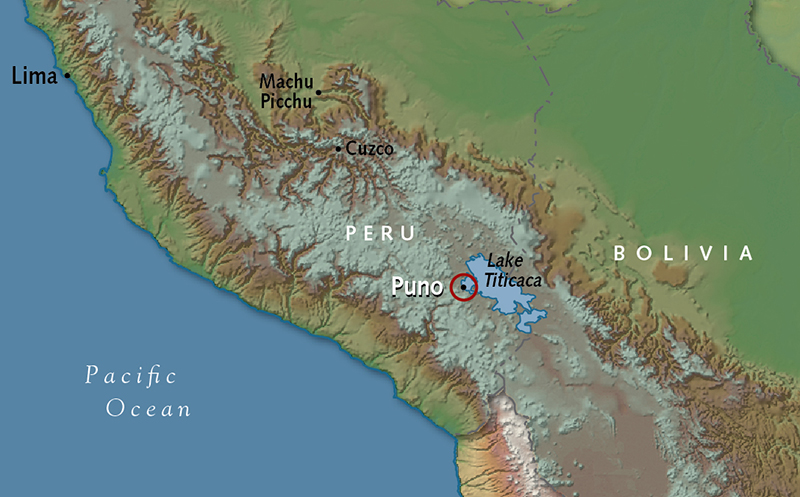Titicaca, the world's highest navigable lake, is a world unto itself—a definite must-see. It's located 560 mi/900 km southeast of Lima, on the Peru/Bolivia border, at an altitude of 12,500 ft/3,812 m. One way to see Titicaca is on the 12-hour train ride from Cuzco to Puno through the Andes, a trip that reaches an elevation of more than 14,000 ft/4,265 m as you pass by farms, people's backyards, waterfalls and bleak but wondrous scenery—clear blue sky, deep blue water and dry, barren landscape.
This is an expensive tourist train and runs three or four times a week; the local train, which was notorious for thievery, no longer operates. Tourist buses also cover this route, stopping at major sights en route. They are faster and have English-speaking guides. Peruvians and tourists on a time limit take normal buses between Cusco and Puno, usually a six-hour trip.
Don't neglect the attractions on the Bolivian side of the lake. Stop overnight in Puno, an uninspiring town near the border that's one of the best places in Peru to buy Andean handicrafts—alpaca sweaters, rugs, ponchos and tapestries. (The town is also known for its colorful fiestas and folk dances.) Then continue by bus or car to Copacabana, just across the border, for Bolivian customs formalities and to tour the cathedral or take a day trip to the Isla del Sol and Isla de la Luna. With its small-village atmosphere and charm, this town is a nice overnight stay from which you can see more of the lake.
From Puno, tours or public transport are available to Taquile Island (small Inca ruins and very nice woven goods), Sillustani on Lake Umayo (to see chullpas, the funerary towers of the ancient Colla people) and the Floating Islands (actually enormous floating reed mats that support the Uros people's villages of reed huts—you can buy reed souvenirs there).
